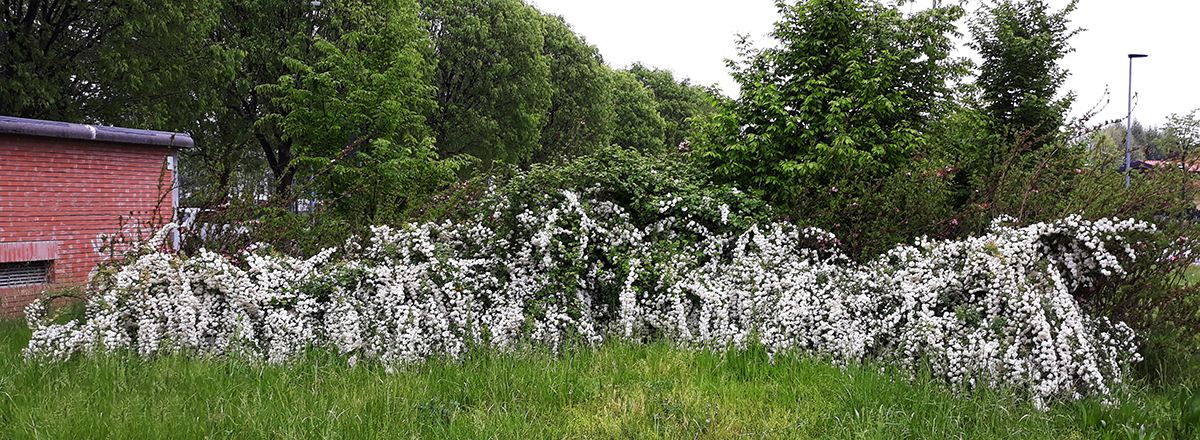IDENTIFICATION OF La Spiraea x vanhouttei
Scientific name: Spiraea x vanhouttei
Italian common name: Spirea
Family: Rosaceae
Provenance: Distribuzione prevalentemente eurasiatica. For horticultural use – Origin from hybridization of Spiraea cantoniensis x Spiraea trilobata.
Habit: Ama il clima temperato ed è in grado di resistere al freddo, anche se teme le gelate tardive.
Evergreen or deciduous: Deciduous
PLANT RECOGNITION OF
Spiraea x vanhouttei
Height: 130 – 200 cm
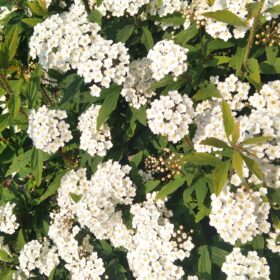
Width (extension): 300 – 400 cm
Habit: arched and hanging
Leaf: the leaves are dark green on the upper side and blue-green on the lower side with a crenate shape and little toothing, sometimes tri or five-lobed. in autumn they take on colors ranging from yellow to orange-bronze.
Flower: white, cupped flowers in dense corymbs up to 5 cm wide.
Flowering: May – June
Fruit: the fruits are small capsules, of little relevance.
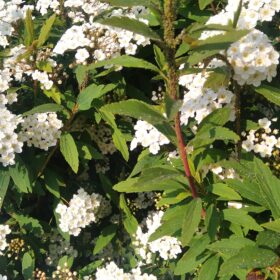
Perfume: light
NEED
Maintenance: Low
Fertilization: fertilize in early spring with a slow release organic fertilizer to increase flowering.
Exposure to light: sun, partial shade. If grown in the shade, flowering is poor
Soil type: well drained. Limestone Tolerance; Clay Tolerant; Tolerate Pollutants. It also tolerates difficult soils even if in a very bright sunny or semi-shaded position.
Soil acidity: Normal PH
Italian climatic area: it survives between -15 and 37 °C in the Pre-Alps (zone 7), North and Apennines (8), Center (zone 9). It resists the sea, it resists pollution.
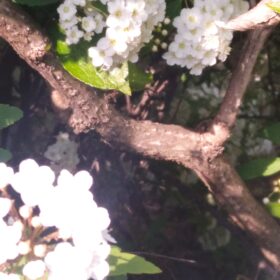
Water Need: Watering is generally only necessary in severe drought.
Diseases: very resistant plant, it can rarely be affected by powdery mildew and rust. If pruned too much it can become filled with aphids. scale insects
Pruning: Flowering on the branches of the year, it should be pruned at the end of flowering by removing the older branches and shortening the remaining ones in half.
Propagation: Its propagation can take place by division of the tuft, in autumn or late winter, or by woody cuttings, in autumn and spring.
SPECIAL FEATURES:
One of the spiraea most planted by the municipalities due to its easy management, widely used in Eastern European countries as a border hedge.
Annotations
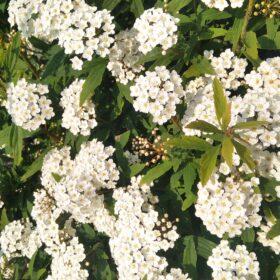
The botanical name of this fascinating genus derives from the Greek ‘spéira’ (rope), because the stems, sometimes twisted, can resemble a thin rope.
Therapeutic use: The spiraea that is cited for therapeutic use is Spirea ulmaria. For all the curiosities about this variety you can consult this site (from https://www.edendeifiori.it/)
In the kitchen: this variety is not used.
This plant is also used for hedges because, despite its stripping properties, it has thick branches that also shield in winter. However, it does best when placed in a free flowerbed due to its arched and drooping habit.
Now on horseback! Work awaits us! Our new wonderful outdoor space is about to be born!
GOOD WORK and…if you have any questions, write to info@ilmondodelgiardino.com
Sources of the images: thanks to Pixabay and in particular Ursula for the image for social networks and thanks to the editorial staff for all the photos included in this profile.


